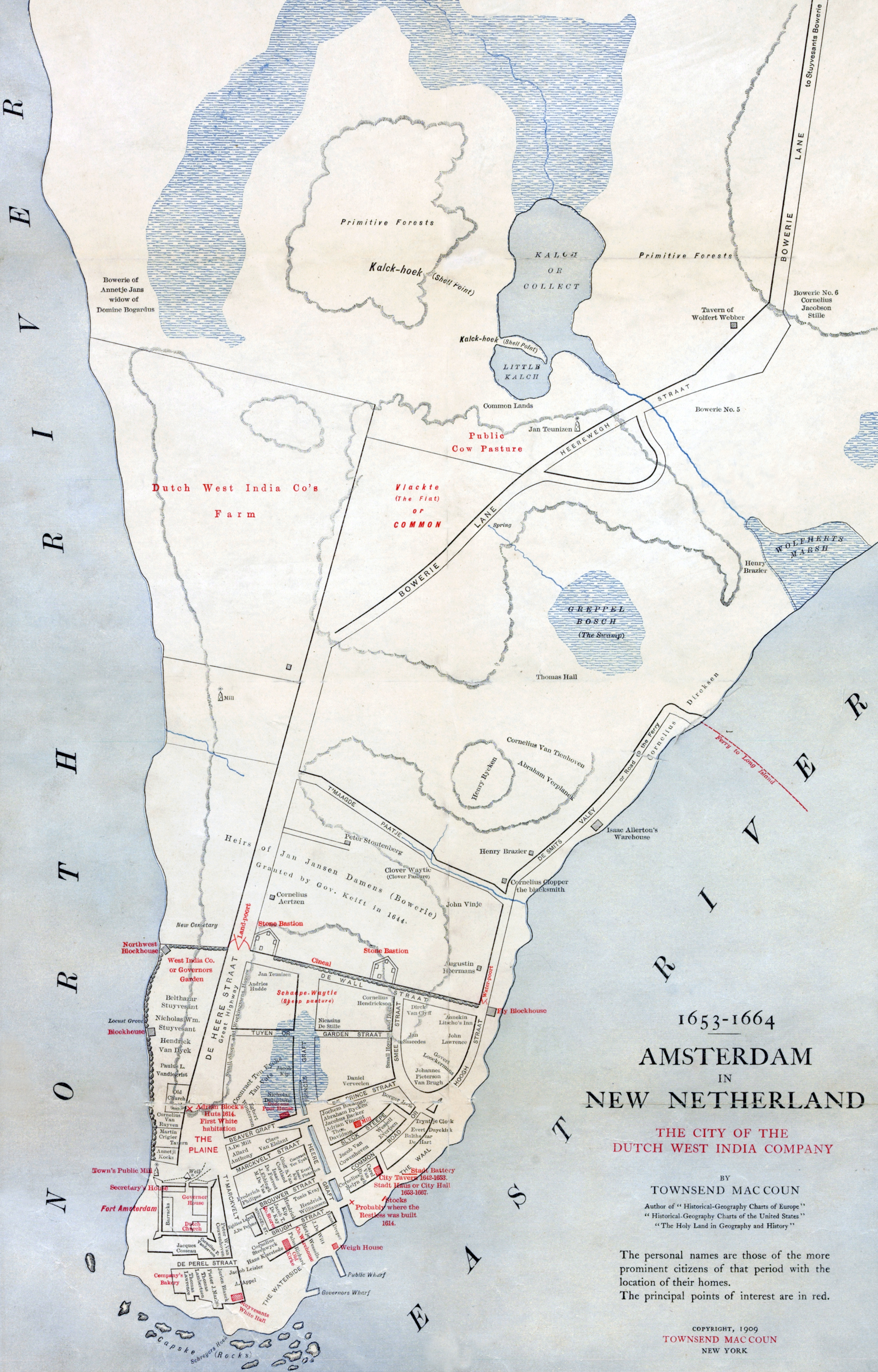
New Amsterdam in New Netherland, 1653 - 1664
The City of the Dutch West India Company, 1653 - 1664, by Townsend MacCoun (1845-1932), published in 1909. The Dutch settlers controlled the Hudson River Valley from 1609 until 1664. They established New Netherland, a series of trading posts, towns, and forts that laid the groundwork for towns that exist today. The Dutch lost New Netherland to the English during the Second Anglo-Dutch War in 1664. Source: New York Public Library.
Below, some text from the Rider's New York city and vicinity, ..., edited by Fremont Rider, 1916.
«Beginning with 1610, Dutch merchants despatched several vessels to engage in the fur trade with the Indians. In 1613, a ship commander, Adrian Block, whose ship the Tiger had been burned, erected four houses to shelter himself and crew while building a new ship, the Unrest. These dwellings, the first white men's habitations on Manhattan Island, formed the beginning of a trading post, and are supposed to have been situated near what is now 41 Broadway. This was the fourth settlement on the continent, St. Augustine having been founded in 1606, Santa Fé in 1605, and Jamestown, Va., in 1607. Plymouth was established in 1620. In 1615 Fort Nassau was established on a site near Albany and in 1622 it was abandoned in favor of the present site of Albany, then called Fort Orange.
In 1614, the States General of Holland chartered the United New Netherland Company of Amsterdam, granting it a three-year monopoly of the Dutch fur trade in America. This same year the company built Fort Netherland. on the site now occupied by the Custom House. This company was succeeded by the West India Trading Company. which received a charter from the States-General of Holland giving wide authority over this region, and soon began active colonization and trading.
For several years the colony was maintained wholly in the interest of the company. Its inhabitants, all of them agents or employees, had no political rights, title to land or the privilege of trading with Europe on their own account. When the company attempted to encourage agriculture in other parts of the province, it reserved to itself the whole Island, a large portion of which was divided into six farms.»
More: Maps of NYC - 17th Century ►

More: Historical maps of New York City ►
|
Copyright © Geographic Guide - 17th Century NYC. |
New Amsterdam in New Netherland, 1653 - 1664
